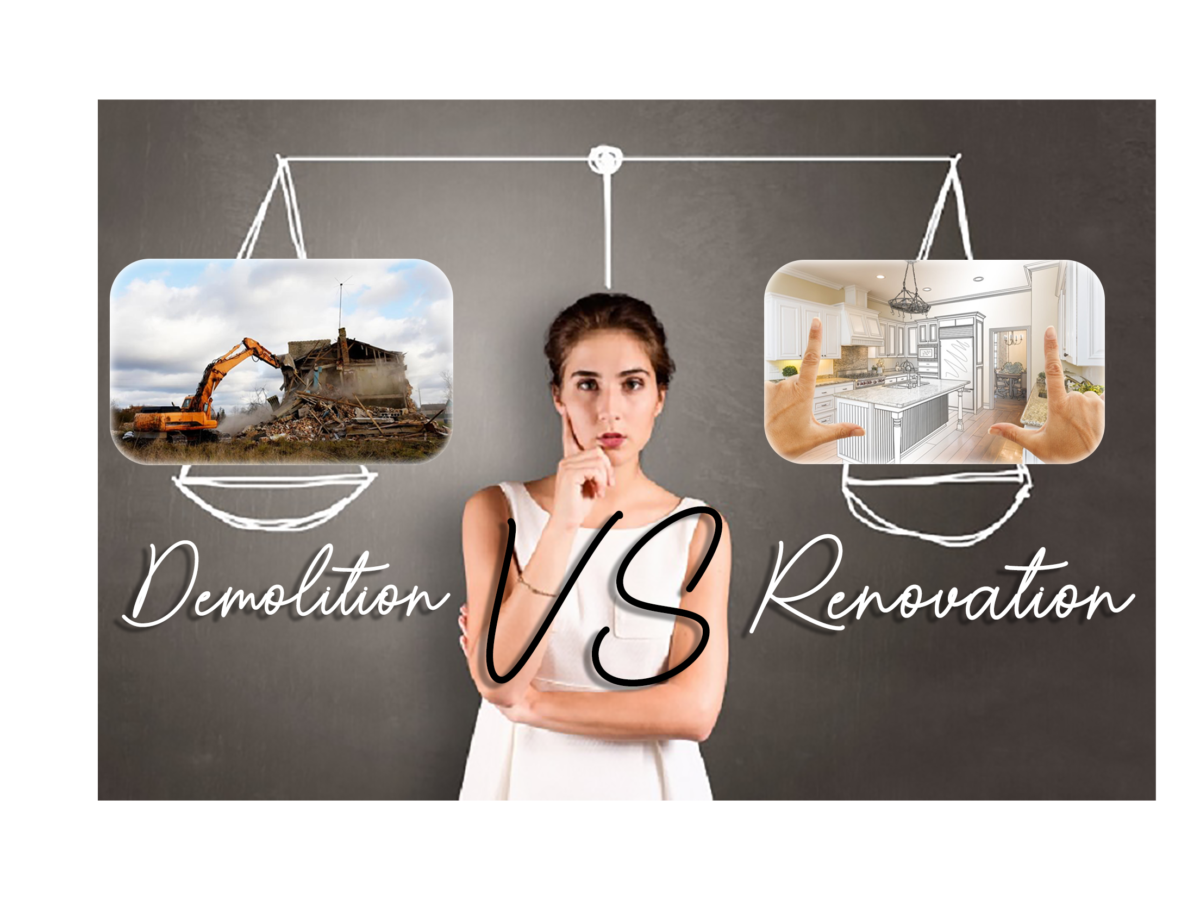Understanding the Decision: Renovation vs Demolition
The choice between renovating an existing structure and demolishing it to make way for a new one is a significant decision for property owners and developers. This decision can be influenced by a variety of factors ranging from economic considerations to environmental impact. In this comprehensive exploration, we will delve into the critical aspects that influence whether to renovate or demolish a building, guiding you towards making an informed choice.
The decision between renovating an existing structure and opting for demolition to pave the way for new construction is pivotal in the realm of property development. This section delves deeper into the various aspects that influence this critical choice, helping property owners, developers, and stakeholders understand the nuances and long-term implications of each option.
Historical Significance in Property Revitalization
Assessing Historical Significance
- Cultural Heritage: Buildings with historical significance carry cultural and historical narratives that are invaluable. Renovation of such structures often aims to preserve these narratives.
- Architectural Merit: The architectural style and uniqueness of a building can also be a deciding factor. Unique or rare architectural features often warrant preservation through renovation.
Economic Analysis: Renovation vs Demolition Costs
Evaluating Renovation Costs
When considering renovation, the primary focus should be on the cost involved. Renovation can vary widely in expense depending on the scope of the project. Key factors to consider include:
- Condition of the Building: The current state of the structure significantly affects renovation costs. A building requiring extensive repairs or updates can sometimes be as costly as new construction.
- Historical Value: Renovating historical buildings often involves specialized craftsmanship and materials, which can increase costs.
- Intended Use: The intended function of the building post-renovation plays a crucial role in cost. For instance, converting an old warehouse into residential apartments might require a substantial financial investment.
Assessing Demolition and Rebuilding Costs
Conversely, demolition and rebuilding can also be costly but offer a clean slate. Factors influencing this cost include:
- Demolition Expenses: The process of demolition itself has costs, including labor, equipment, and disposal of materials.
- New Construction Costs: Building anew allows for modern designs and materials but can be expensive, especially with current market rates for construction materials and labor.
- Permitting and Zoning Issues: New constructions often face stringent regulatory requirements, which can add to the overall expense.
Environmental Impact: Renovation vs New Build

Renovation and Eco-Friendliness
Renovating existing structures often has a lower environmental impact than demolition and new construction. Key environmental considerations include:
- Waste Reduction: Renovation typically generates less waste compared to demolition.
- Preservation of Resources: It conserves materials and reduces the demand for new resources.
- Energy Efficiency: Retrofitting old buildings with energy-efficient systems can significantly reduce their carbon footprint.
Demolition and Environmental Concerns
Demolition, while sometimes necessary, can have significant environmental implications:
- Waste Generation: Demolition creates a large amount of waste, much of which may not be recyclable.
- Energy Consumption: The process of building anew consumes energy, both in the construction process and in the manufacturing of new materials.
- Potential for Sustainable Development: However, it offers an opportunity to create buildings that are more energy-efficient and environmentally friendly from the outset.
Community Dynamics in Renovation vs Demolition Choices
The Role of Public Perception
- Community Attachment: Buildings often hold sentimental value for communities. The decision to renovate or demolish can significantly impact public sentiment.
- Involving Stakeholders: Engaging with local communities, stakeholders, and authorities early in the decision-making process can provide valuable insights and foster support for the project.
Community and Aesthetic Considerations in Renovation vs Demolition
Neighborhood Dynamics and Heritage
Renovations can preserve the character of a neighborhood, maintaining a sense of continuity and heritage. However, in some cases, a new structure might better serve community needs or revitalization efforts.
Visual Impact and Design
The aesthetic appeal of a building plays a role in its integration into the community. Renovation offers the chance to update a building while retaining its character, whereas demolition provides a blank canvas for modern architectural designs.
Technological Innovations in Renovation and Demolition
Leveraging Modern Techniques
- Renovation Technologies: Advances in technology have made it possible to renovate old buildings more effectively and efficiently, preserving historical elements while incorporating modern amenities.
- Innovative Construction Methods: New construction benefits from innovative methods like modular construction or green building techniques, offering enhanced efficiency and environmental benefits.
Navigating Legal and Regulatory Factors in Renovation vs Demolition Decisions
Compliance with Building Codes and Regulations
Regulations can heavily influence the decision to renovate or demolish. Considerations include:
- Building Codes: Older buildings might not meet current building codes, making renovation challenging and potentially costly.
- Zoning Laws: Zoning regulations may restrict the extent to which a building can be modified, impacting the feasibility of renovation.
- Historical Preservation Laws: Buildings designated as historical landmarks often have strict guidelines governing alterations.
Navigating Permits and Approvals
Both renovation and demolition require navigating a complex landscape of permits and approvals, which can impact the project timeline and cost.
Conclusion: Weighing Your Options
In conclusion, the decision between renovation and demolition is multifaceted, involving economic, environmental, legal, and community considerations, also is a crucial step for property owners and developers, especially when dealing with structures that may have historical significance or environmental implications. One of the key players in this decision-making process is an asbestos removal company. These specialized experts play a vital role in assessing and mitigating the environmental risks associated with older structures. Their involvement becomes particularly significant when considering renovation, as historical buildings often contain asbestos-containing materials that need safe and thorough removal. By working alongside experienced professionals like those at Demolition Company Vancouver, property owners can ensure that they make informed choices that prioritize safety, compliance with regulations, and the preservation of both the environment and historical narratives.



